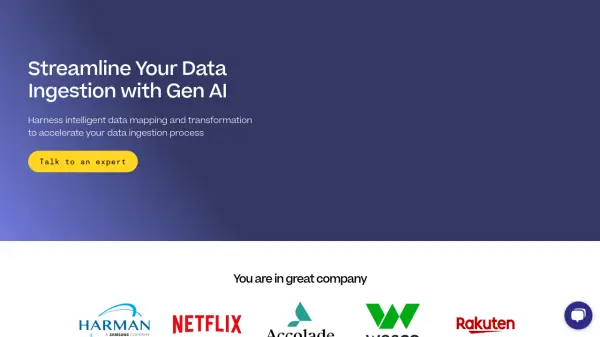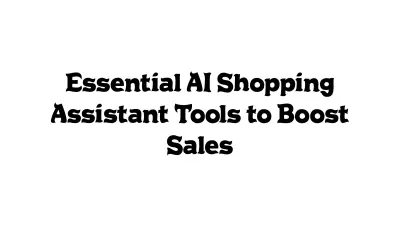What is Osmos?
Osmos provides an intelligent solution for automating data ingestion processes. It leverages Artificial Intelligence, including generative AI, to simplify the cleaning, mapping, and transformation of external data before it enters operational systems. The platform features components like AI-assisted Pipelines for automated ETL (Extract, Transform, Load) and an embeddable Uploader for a self-service data import experience directly within applications.
Designed for both technical and non-technical users, Osmos offers intuitive, no-code tools such as AI-Powered AutoClean for natural language data cleanup and AutoMap AI for automatic schema mapping. It efficiently handles complex relational datasets and large file sizes, significantly reducing development time and manual effort. By ensuring data quality and providing seamless integrations with common systems, Osmos accelerates customer onboarding, facilitates data migration, and enhances overall operational efficiency for businesses.
Features
- AI Data Wrangler: Automate the cleaning and importing of data into target systems using AI.
- AI-Powered AutoClean: Map and clean data using intuitive natural language commands.
- SmartFill: Transform input data based on provided examples of clean output data.
- AutoMap AI: Automatically maps source to destination schema using generative AI.
- Osmos Pipelines: Automate data cleaning and import workflows (AI-powered ETL).
- Osmos Uploader: Embeddable smart data uploaders for a self-serve end-user experience.
- No-Code Data Transformation: Parse, map, clean, format, and validate data without writing code.
- Complex Relational Data Handling: Ingest, correlate, lookup, and join multiple related datasets without SQL.
- Large Scale Processing: Handle gigabyte-sized files containing millions of records.
- Pre-built Connectors: Integrate with common systems like S3, Azure Blob, Snowflake, Google Sheets, databases, and FTP.
Use Cases
- Automating data cleaning and preparation for analysis.
- Streamlining customer and partner data onboarding processes.
- Facilitating complex data migrations between systems.
- Embedding self-service data import capabilities within applications.
- Improving data quality before ingestion into operational systems.
- Managing and transforming large datasets efficiently.
- Reducing reliance on engineering resources for data wrangling tasks.
FAQs
-
How does Osmos define a 'record' in per-record billing?
Osmos charges per record processed. This includes each row read by a Pipeline after deduplication, each row uploaded via an Uploader, and each 'failed' row that is reprocessed after fixes or mapping edits. -
What are the billing options available?
Monthly payments are accepted via major credit or debit cards. Enterprise customers may have additional billing options available upon contacting Osmos. -
How can I upgrade my Osmos plan?
Current customers can upgrade their plan within the app under the 'Account' tab or by contacting their designated Customer Success Manager. -
What happens if I change my Osmos plan?
When you change plans, the corresponding features and new pricing structure will be updated in your account automatically.
Related Queries
Helpful for people in the following professions
Osmos Uptime Monitor
Average Uptime
99.86%
Average Response Time
299.13 ms
Featured Tools
Join Our Newsletter
Stay updated with the latest AI tools, news, and offers by subscribing to our weekly newsletter.











